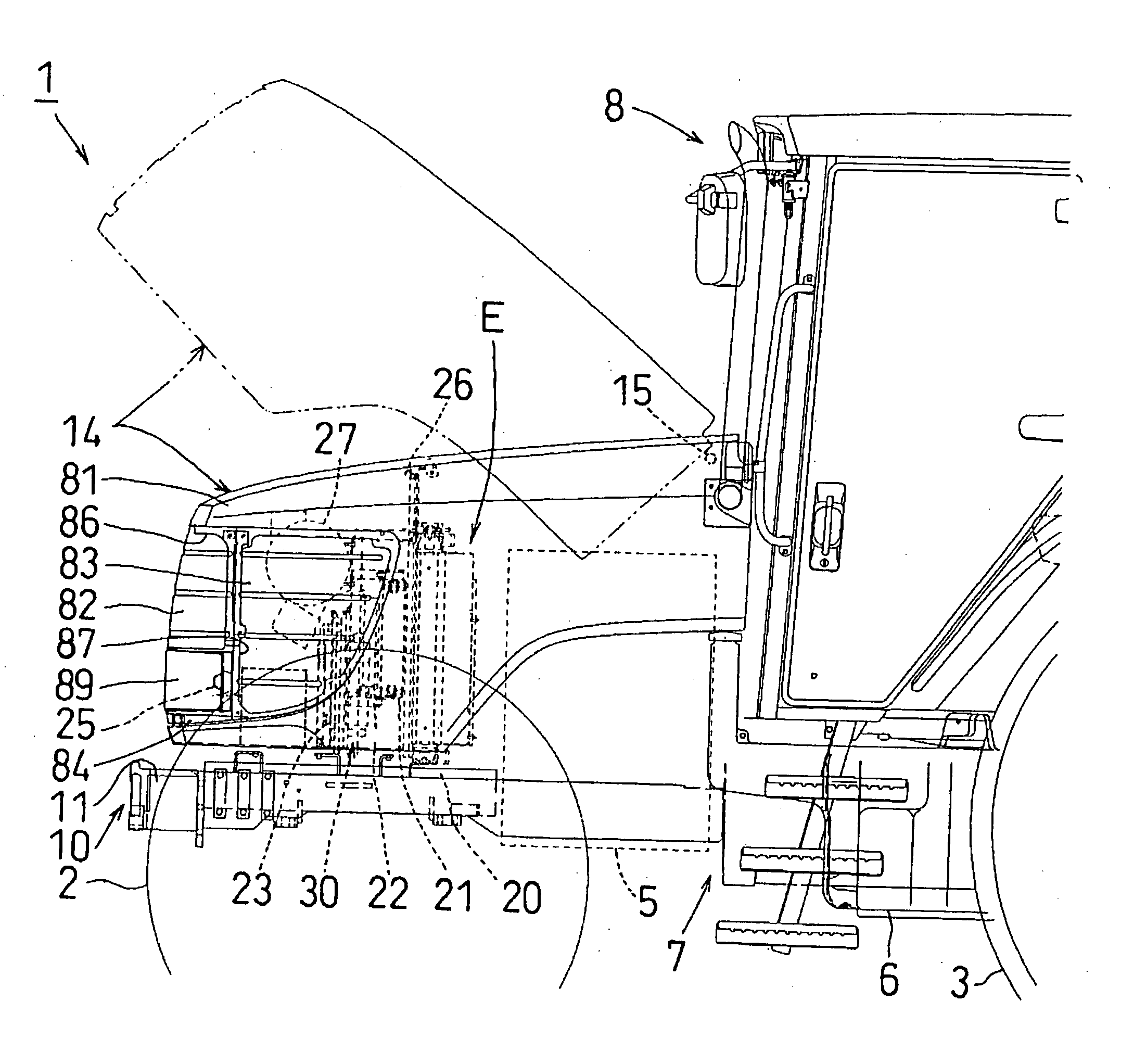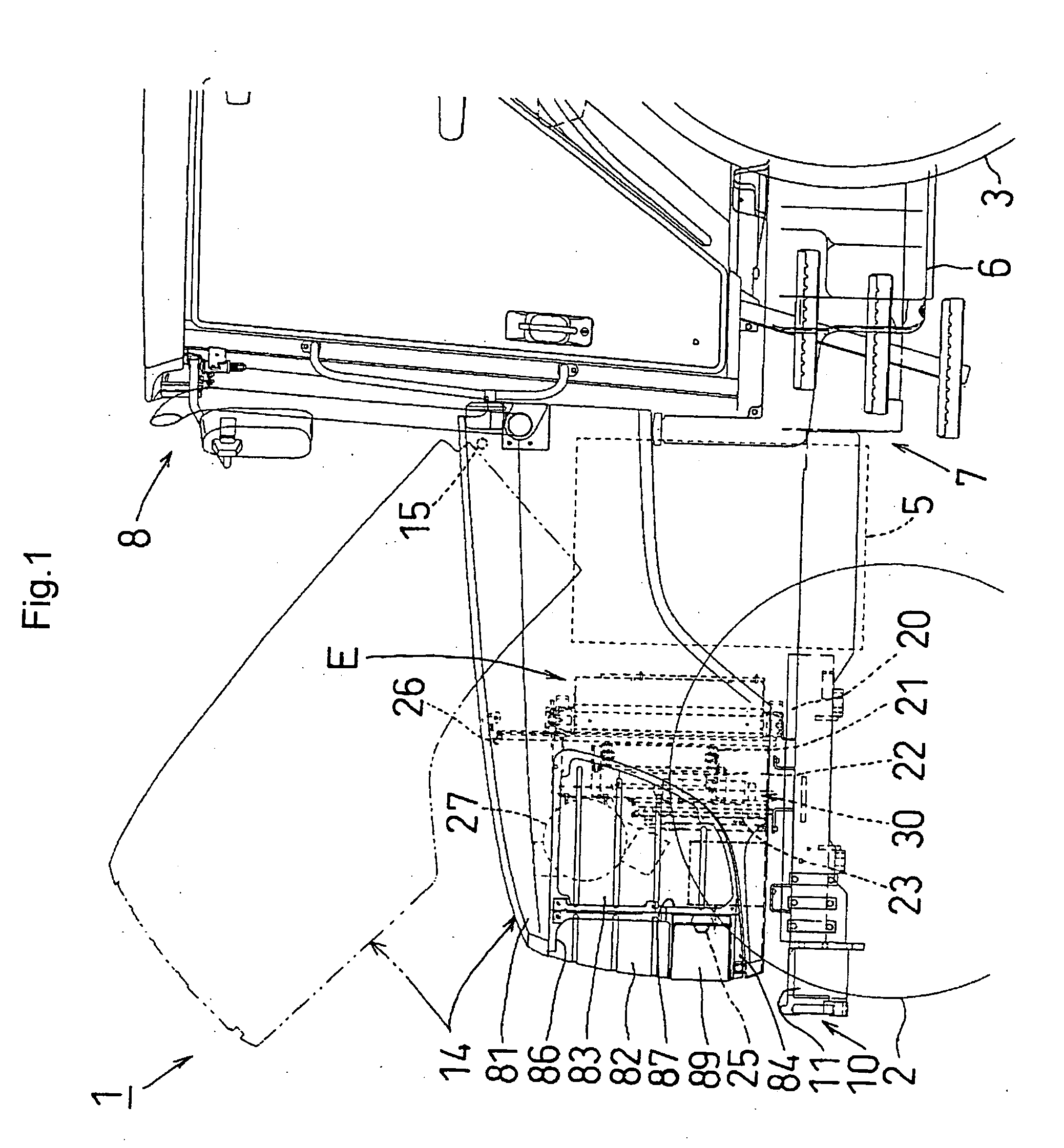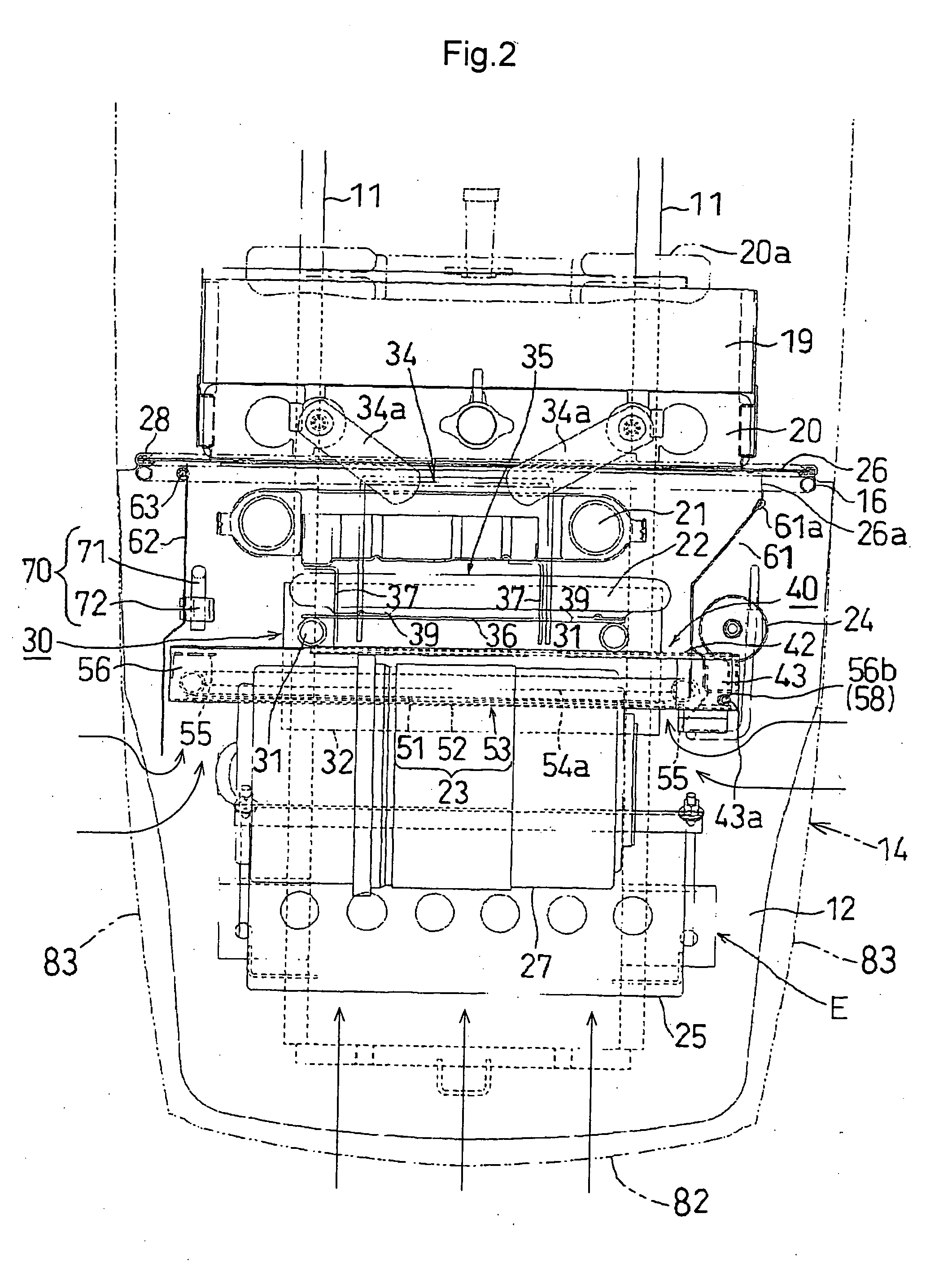Work vehicle
- Summary
- Abstract
- Description
- Claims
- Application Information
AI Technical Summary
Benefits of technology
Problems solved by technology
Method used
Image
Examples
first embodiment
[First Embodiment]
[0057] In FIG. 1, a tractor 1, as an example of work vehicle, includes a pair of right and left front wheels 2 used for steering and auxiliary traveling drive, and a pair of right and left rear wheels 3 used for main traveling drive. The tractor 1 is driven by a drive force transmitted from an engine 5. Further, this tractor 1 can be switched over between a two-wheel drive mode (rear wheel drive) and four-wheel drive mode (front and rear wheels drive) by means of switching means. The engine 5, a transmission case 6 etc. together constitute a traveling vehicle body 7, which mounts, at a rear portion thereof, an independent mount type cabin 8 including a driver's seat and a driving section.
[0058] The traveling vehicle body 7 mounts, at a front portion thereof, the engine 5 and a front axle frame 10 supporting axles of the right and left front wheels 2. An upper portion of the front axle frame 10 is covered with a hood 14 formed of a metal plate or resin shaped like ...
second embodiment
[Second Embodiment]
[0108] The side faces of the hood 14 can be alternatively constructed as shown in FIG. 24.
[0109] In the first embodiment, the size of the air vent holes is set same for the right and left side faces and the front face of the hood 14 and the disposing density (the number of air vent holes per unit area) is set smaller for the air vent holes 102 of the side faces of the hood 14 than the air vent holes 101 of the front face of the hood 14 and the air vent holes 101 of the front lower end of the hood 14.
[0110] Instead, as shown in FIG. 24, in this second embodiment, the air vent holes 102 of the side faces of the hood 14 are smaller than the air vent holes 101 of the front face of the hood 14 and the air vent holes 101 of the front lower end of the hood 14. With this, the ratio of the air vent holes relative to the air vent hole forming area is smaller for the side faces of the hood 14 than for the front face thereof.
[0111] In this second embodiment, as shown in FI...
third embodiment
[Third Embodiment]
[0113] Further, as shown in FIG. 25, in this embodiment, the disposing pitch (the number of air vent holes per unit area) of the air vent holes 102 of the side faces of the hood 14 is set smaller than the disposing pitch of the air vent holes 101 of the front face of the hood 14 and also the disposing pitch of the air vent holes 101 of the front lower end of the hood 14. In addition, the air vent holes 102 of the side faces of the hood 14 are smaller than the air vent holes 101 of the front face of the hood 14 and the air vent holes 101 of the front lower end of the hood 14. With this, the velocities of the introduced ambient air from the right and left faces and the front face of the hood 14 are equated with each other.
[0114] In this third embodiment, as shown in FIG. 25 for example, the air vent holes 102 (corresponding to the second air vent holes) of the side grill member 83 are formed as round holes with a diameter of 0.75 mm, which is a half of the diameter:...
PUM
 Login to View More
Login to View More Abstract
Description
Claims
Application Information
 Login to View More
Login to View More - R&D
- Intellectual Property
- Life Sciences
- Materials
- Tech Scout
- Unparalleled Data Quality
- Higher Quality Content
- 60% Fewer Hallucinations
Browse by: Latest US Patents, China's latest patents, Technical Efficacy Thesaurus, Application Domain, Technology Topic, Popular Technical Reports.
© 2025 PatSnap. All rights reserved.Legal|Privacy policy|Modern Slavery Act Transparency Statement|Sitemap|About US| Contact US: help@patsnap.com



